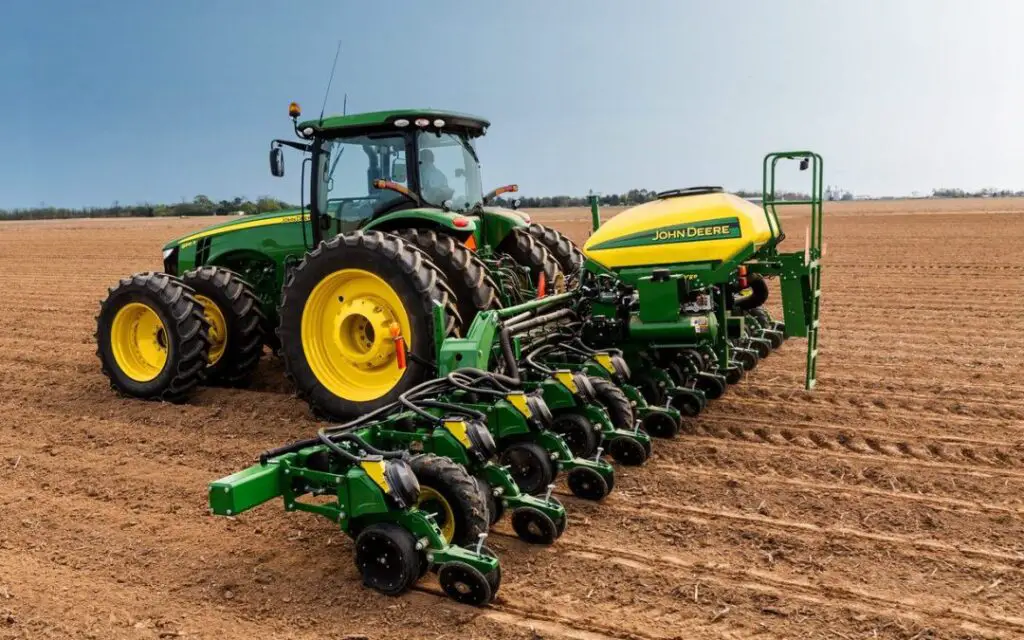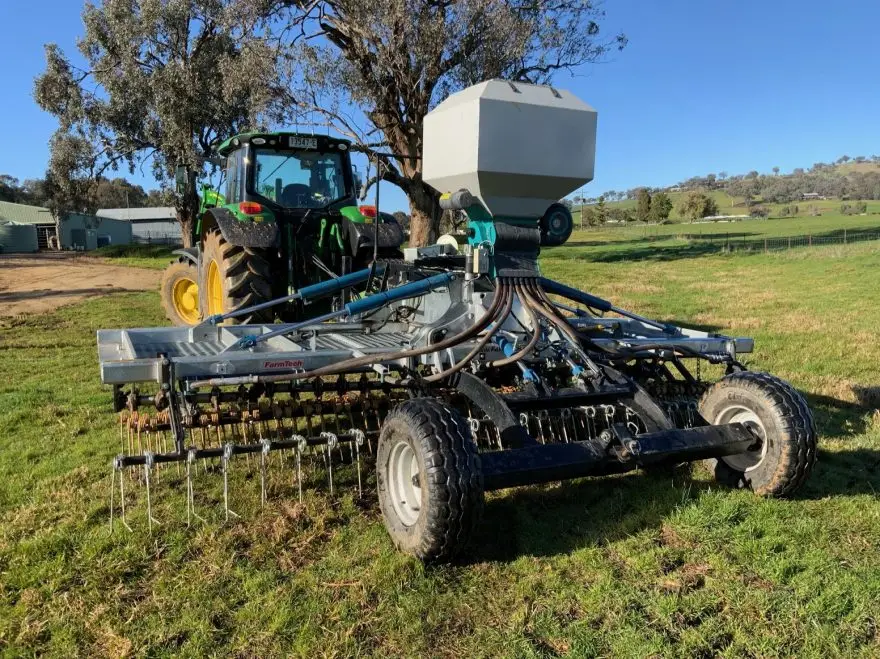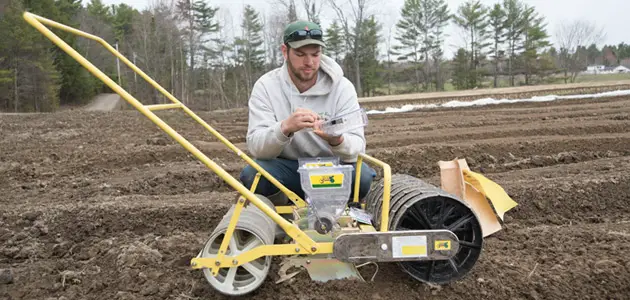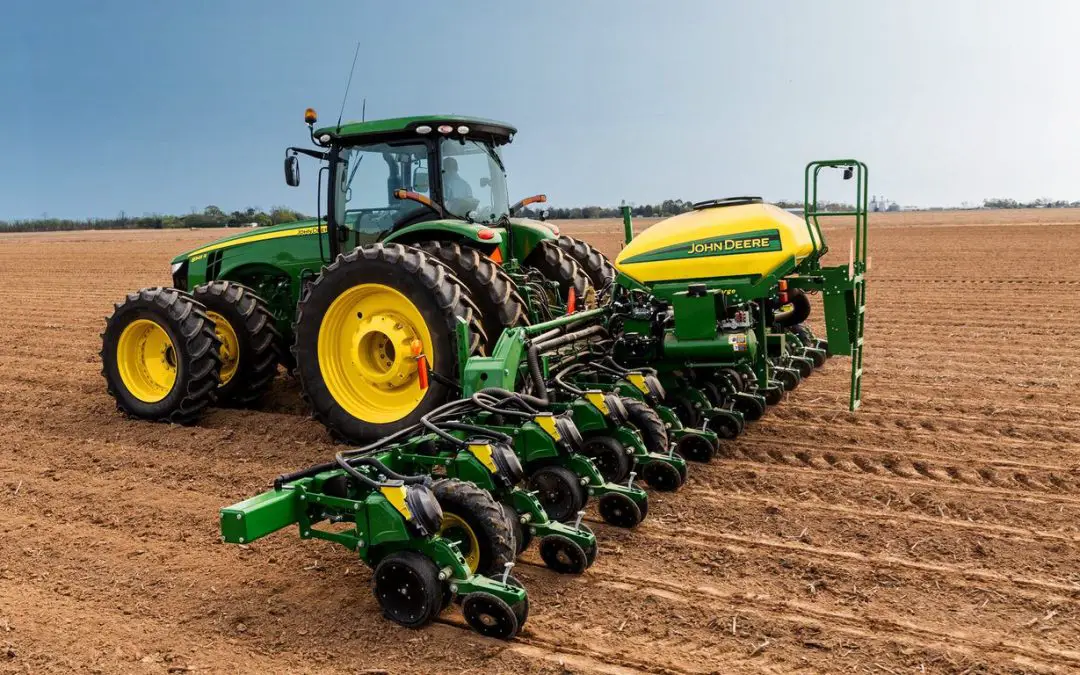This post may contain affiliate links which means I may receive a commission for purchases made through links. Learn more on my Private Policy page.
Are you curious about the different types of seeders and how they work? Look no further! This article will provide you with a comprehensive overview of the various types of seeders and their functions. Whether you are an avid gardener or simply interested in learning more about agriculture, understanding the mechanics behind seeders can be fascinating. So, let’s dive right in and explore the world of seeders together!
Types of Seeders
When it comes to planting seeds efficiently and effectively, there are several types of seeders that you can choose from. Each type has its own unique features and benefits, making it suitable for specific planting situations. Let’s explore the different types of seeders and how they work.
Broadcast Seeder
Definition
A broadcast seeder is a type of seeder that disperses seeds over a large area, much like how a broadcaster spreads fertilizer. It is commonly used for sowing seeds on large expanses of land, such as agricultural fields or pastures.
Operation
The broadcast seeder works by rotating a disc or reel inside a hopper, which holds the seeds. As the disc or reel rotates, it throws the seeds out in a wide arc, covering a broad area. This allows for quick and efficient seeding over a large surface.
Advantages
One of the main advantages of a broadcast seeder is its ability to cover a large area quickly. It is also relatively easy to use, requiring minimal operator input. Additionally, broadcast seeders are often more affordable compared to other types of seeders.
Disadvantages
However, there are also some disadvantages to using a broadcast seeder. Since the seeds are dispersed over a wide area, it can lead to uneven seed distribution, resulting in patchy germination. This may require additional manual seeding in certain areas to ensure optimal plant growth.

This image is property of buyonlinemachines.com.
Drop Seeder
Definition
A drop seeder, as the name suggests, is a seeder that drops seeds directly onto the ground. It is commonly used for smaller-scale seeding, such as in backyard gardens or small agricultural plots.
Operation
The drop seeder operates by gravity, as the seeds are released from a hopper through a series of small openings. These openings can be adjusted to control the seed spacing, allowing for precise seed placement. The seeds then fall directly onto the ground, where they can be covered with soil or mulch.
Advantages
One of the advantages of a drop seeder is its accuracy in seed placement. With adjustable seed spacing, you can have better control over the density and spacing of your plants. Drop seeders also tend to be more cost-effective compared to other types of seeders, making them a popular choice for small-scale planting.
Disadvantages
The main disadvantage of a drop seeder is its slower operating speed. Since the seeds are dropped one by one, it may take more time to cover a larger area compared to other types of seeders. Additionally, drop seeders may require more frequent refilling of the hopper if you have a large planting area.
Pneumatic Seeder
Definition
A pneumatic seeder is a seeder that uses air pressure to propel the seeds into the ground. It is commonly used in agricultural settings, where precision seed placement is crucial.
Operation
The pneumatic seeder works by using a vacuum or air pressure to pick up the seeds from a hopper or seed container. The seeds are then transported through a series of tubes or hoses to the planting units. Once at the planting units, the seeds are expelled into the ground with the help of air pressure.
Advantages
One of the main advantages of a pneumatic seeder is its precision in seed placement. With controlled air pressure, you can ensure that the seeds are distributed evenly and at the desired depth. Pneumatic seeders also tend to have a higher operating speed compared to other seeders, allowing for efficient planting.
Disadvantages
However, pneumatic seeders can be more complex and expensive compared to other types of seeders. They also require proper maintenance to ensure optimal performance. Additionally, the use of compressed air or a vacuum system may require a power source, which may limit their use in certain settings.

This image is property of www.farmtech.com.au.
Precision Seeder
Definition
A precision seeder is a seeder that utilizes advanced technology to deliver accurate seed placement. It is commonly used in commercial agriculture to achieve optimal plant spacing and uniformity.
Operation
The precision seeder operates through a combination of mechanical and electronic components. It uses a metering system to control the flow of seeds and precise mechanisms to deposit the seeds at the desired spacing and depth. Some precision seeders also incorporate GPS and computer control systems for even more precise planting.
Advantages
The main advantage of a precision seeder is its ability to achieve uniform plant spacing and population, resulting in improved crop yield and quality. It also allows for efficient use of seeds, reducing waste and optimizing planting density. Precision seeders are especially useful for crops that require uniform germination and growth.
Disadvantages
Precision seeders tend to be more expensive compared to other types of seeders. They also require skilled operators and proper calibration to ensure accurate seed placement. Additionally, the complexity of precision seeders may require more maintenance and adjustments compared to other seeders.
Finger Seeder
Definition
A finger seeder, also known as a dibbler seeder, is a seeder that uses a series of small fingers or prongs to create holes in the soil and then drop seeds into those holes. It is commonly used for precise seed placement, especially for small seeds.
Operation
The finger seeder works by dragging or pushing the seed delivery mechanism across the planting area. As it moves, the fingers create holes in the ground at the desired spacing and depth. The seeds are then dropped into the holes, ensuring accurate seed placement.
Advantages
One of the main advantages of a finger seeder is its ability to handle small seeds with precision. It allows for controlled seed placement and prevents seeds from being blown away by wind or washed away by rain. Finger seeders are also relatively simple in design and easy to operate.
Disadvantages
However, finger seeders may not be as efficient for larger seeds or when planting over a larger area. The process of creating holes and dropping seeds one by one can be time-consuming, especially for large-scale planting. Additionally, finger seeders may require more manual effort compared to other types of seeders.

This image is property of blog.machinefinder.com.
Components of a Seeder
While the different types of seeders vary in their operation and capabilities, they commonly consist of several key components that contribute to their functionality and efficiency.
Seed Hopper
Definition
The seed hopper is the container or compartment that holds the seeds before they are dispensed. It can vary in size and design, depending on the type of seeder and the intended planting area.
Function
The main function of the seed hopper is to securely hold the seeds and protect them from damage or exposure. It also allows for easy loading and refilling of seeds during the planting process.
Design Types
Seed hoppers can come in various designs, such as single-compartment hoppers or multi-compartment hoppers. Single-compartment hoppers hold a single type of seed, while multi-compartment hoppers allow for the simultaneous planting of different seed varieties.
Metering System
Definition
The metering system is responsible for controlling the flow of seeds from the hopper to the planting units. It ensures that the seeds are dispensed at a consistent rate and spacing.
Types
There are various types of metering systems, including fluted rollers, seed cups, and vacuum systems. Each type has its own mechanism for measuring and delivering the seeds accurately.
How It Works
The metering system typically consists of rotating parts or mechanisms that pick up the seeds from the hopper and transport them to the discharge mechanism. The design and operation of the metering system vary depending on the type of seeder.

This image is property of www.johnnyseeds.com.
Seed Depth Control
Definition
Seed depth control refers to the ability of the seeder to place the seeds at the desired depth in the soil. Proper seed depth is crucial for successful germination and early plant growth.
Methods
Seed depth control can be achieved through various methods, such as adjustable coulters, depth wheels, or furrow openers. These components help ensure that the seeds are placed at the optimal depth for germination.
Importance
Proper seed depth control is essential for uniform germination and seedling emergence. If the seeds are planted too shallow, they may be exposed to adverse environmental conditions or become susceptible to predation. On the other hand, planting seeds too deep may hinder their ability to emerge and result in poor plant establishment.
In conclusion, the choice of a seeder depends on the specific requirements and conditions of your planting area. Whether you opt for a broadcast seeder, drop seeder, pneumatic seeder, precision seeder, or finger seeder, understanding how each type operates and its advantages and disadvantages can help you make an informed decision. Additionally, considering the components of a seeder, such as the seed hopper, metering system, discharge mechanism, row units, and seed depth control, can further enhance the efficiency and effectiveness of your seeding process.
This post may contain affiliate links which means I may receive a commission for purchases made through links. Learn more on my Private Policy page.

